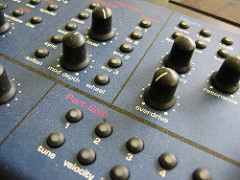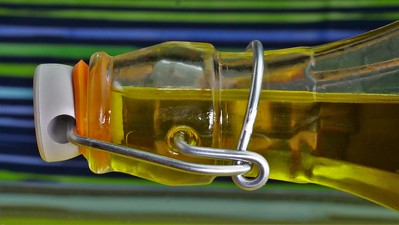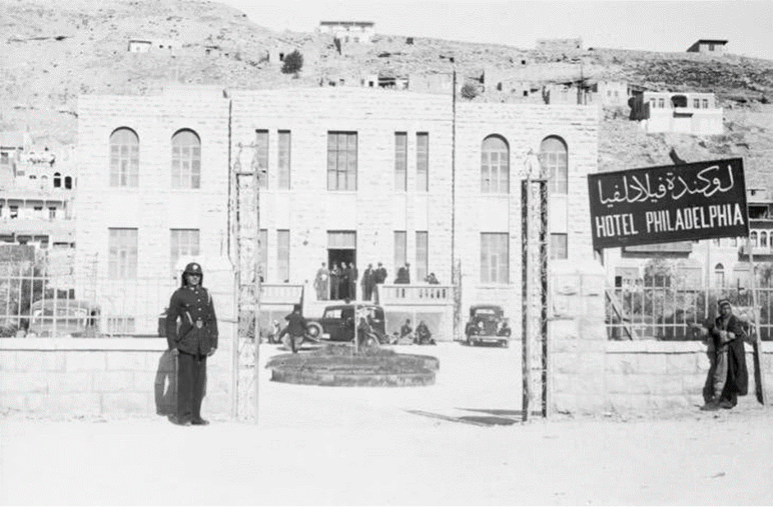I went to buy the Roland Juno-6 with my best friend Michael the summer I was sixteen, before either one of us had a driver’s license. Other boys saved their house-painting money and bought an electric guitar with a starter amp. Or a five-piece drum kit, if they had the kind of parents who tolerated an unholy racket in the basement. Michael and I had earned eight dollars an hour for two weeks to stain a cottage on the Cape, a mythic payday that had sent us whooping and hollering into the waves, and I wanted to buy a synthesizer with my share of the windfall.
I couldn’t play the piano, or read music, and the few times I’d grappled with a synth at E.U. Wurlitzer on Newbury Street, I hadn’t been able to get the sound I wanted by manipulating the controls. What did LFO and DCO stand for? If I opened up the envelope sliders and pressed the chorus button, could I get a nice majestic wash of sound like the one in New Order’s “Your Silent Face”? How did my New Wave heroes play the right lines on their keyboards at the same time that they were turning dials, flicking switches, and pushing faders to regulate the oscillators? It looked so easy when Billy Currie from Ultravox was manning his banks of synths on stage. There was something technical about it, as if he was an engineer and not a regular musician and it was only years of training in electronics that allowed him to record a perfectly calibrated song like “Astradyne” from my favorite Ultravox album, Vienna. On his off days I imagined Currie lending his expertise with a Minimoog and Roland Jupiter-6 to the British space program—yes, there is a British space program—and dreaming up new songs while guiding Mission Control through a launch sequence.
Michael saw the classified ad first. A Roland Juno-6 was for sale, the perfect starter synth with a warm analog sound, and it was only a few years old, in excellent condition. (I no longer remember the asking price.) We could even get to where the seller lived on the T; he was in Jamaica Plain, so we could ride the Orange Line to pick it up. The weekend that we found the Roland, I was staying at Michael’s house in Concord, like I often did. I slept in his oldest brother Paul’s room—he was studying architecture at Brown—and spent most of my time with Michael listening to records, analyzing the tracks with what we thought was a musician’s cool (as in, “Did you hear that bass line? Classic Peter Hook . . . ” or “Only Steve Lillywhite can make a snare drum sound like that . . . ”), and submitting to ritual humiliation at the ping-pong table in the basement. 21-7. 21-9. Sometimes it was a real wipeout: 21-3. While Michael dismantled me at the ping-pong table again, we conspired about the Roland Juno-6 and the makeup of our band.
“You play the synth,” he said, readying for another serve. It was a conversation we had so often that our parts were memorized. Picture the two of us coiled in our playing postures, so much mousse in our hair that only the isolated curls that we’ve styled in the middle of our foreheads move. Our dress is similar, in the vein of Echo & the Bunnymen from their Porcupine period: leather boots with wool socks folded over at the shins, jeans tucked inside, floppy dress shirts with the sleeves rolled up at the biceps. Michael eyed my baseline sideways, trying to throw me off on the direction of his serve. Then he struck. “Take that,” he said to punctuate the precise moment when he thwacked the ball across the table at me.
I returned the serve cleanly, but it was in the net. “Oh, c’mon. That’s awful.”
Michael ran his fingers through his stiff dome of hair, trying not to look too satisfied. “I play bass. I’ll get a Fender with a Peavey amp. We need the biggest sound we can get.”
I flicked the ball back over the net. “Who does programming?”
“We both do programming.”
“Analog or digital drum machine?” I asked while he threw the ball against the concrete floor—just one of his intimidation techniques.
“Digital.”
“Really?” I said. “That surprises me.”
The ping-pong ball stopped bouncing. “Why?”
“I thought you liked analog,” I said. “It’s hard to beat a TR-808.”
“I’m sick of that tick tick tick Depeche Mode shit,” Michael said dismissively. “It’s dance music.” He bounced the ball against the floor one more time.
“We can always run it through an effects pedal . . . ”
Michael struck another serve, this time to my backhand. It was unhittable. The ball caromed off the basement wall and started bounding back to him while I watched. There is nothing quite as dejecting as the sound of a ping-pong ball in an unfinished basement when you’re losing another game to your best friend.
“I’m calling about the Juno-6,” I said aloud. “Maybe I can get it this weekend.”
Michael caught the ball and tossed it across the table. My serve. With a crooked smile, he said, “Let’s do it!”
To get to the Orange Line from Concord we needed Michael’s mother to drive us to the commuter rail station. As I recall, we did our best to replicate the feeling of being ferried in a limo to a recording studio in the East End of London as we looked out the windows moodily. We tolerated her station wagon— and her questions about our plans for the day—as politely as we could without giving too much away. We were on an important errand, after all. It was not just another empty weekend. We were sixteen, and we had some money in the bank from our hard summer labor, and there was a Roland Juno-6 at the other end of our journey that would help us start a band. I had butterflies all the way to the train station in Concord, and they didn’t go away once we’d climbed out of the car, said our goodbyes, and ambled to the platform (his mother would pick us up later that afternoon, waiting in the parking lot while we got off the train in silence, this time with a synthesizer—just a Roland Juno-6, no amp or cords or carrying case), or while the train carried us into Boston in our backwards-facing seats, my hand creeping up my leg again and again to make sure I still had my checkbook with me. It was 1985. I may have had an ATM card, but if I did, I hardly ever used it. We certainly didn’t have Google maps. Though the world had been discovered and mapped by then, it felt like we were heading into the unknown.
The house, when we reached it on foot, was one of the typical sad wooden tenements you saw all over Boston. Grubby clapboard siding, an elevated patch of yard, the same cracked walkway leading to the front door. Did the hallway inside reek of animal piss? Were there bikes tangled on the top landing when we finally made it to the apartment where the synth lived? The mild-mannered grad student, probably thirty, who led us into his place and showed us the Roland Juno-6 had round wire-rimmed glasses, a lot of avant-garde film theory on his bookshelves—and an imported vinyl collection in milk crates that made me respect him immediately.
“You’re going to love this synth,” he said to me, still getting used to the fact that two sixteen-year-old boys had come over for a visit. “I hate to give it up, but I just started a Ph.D. program. No time for bands anymore.”
“You were in bands?” I asked, impressed with the plural form.
“A few,” he said casually. “I’ve played around.”
“Anyone we’ve heard of?” Michael asked, kneeling by the milk crates to check out the record collection. He slid out a copy of Fire Dances by Killing Joke and turned it over reverently in his hands.
“Not likely.”
When we climbed that reeking staircase to his apartment in Jamaica Plain, we were boys. When we left, just a little while later, after listening to a demo of the Juno-6 through his little practice amp that blew us both away, we were boys with a synth. I carried the Roland down the staircase in my arms, careful not to let it bang against the banister, Michael following me a few paces behind, giving me directions in his unhelpful way (“There’s a landing coming up . . . Big obstacle . . . Don’t trip!”). I cradled it in my arms all the way down the block, past more tenements with their cracked walkways and crazed TV antennas, and then I carried it from that neighborhood all the way to the Orange Line station. We found a bench and sat down with the synth across our laps. Other people on the platform stared. I didn’t care. My butterflies had gone away.
“We need a band name,” I told Michael.
“I need to get a bass,” he said, tapping out a silent synth line on the keyboard with his left hand. “That comes next.”
“I wish he’d sold us that amp,” I added.
“You said it.”
We played music together for the rest of high school, Michael on the bass and me on synth. But I never really learned to play the Roland Juno-6. Not like any of my favorite keyboard engineers. I already had other obsessions. I wound up selling my synth to a kid who lived down the hall from me in college for 150 dollars. He kept it for a while, wrapped in a blanket underneath his bed, and I would look for it every time I passed his open door. He was usually blasting Led Zeppelin’s Physical Graffiti and studying in the harsh spotlight of his clip lamps. One vacation, the Roland Juno-6 disappeared. I don’t think he ever played it.
Benjamin Anastas is the author of Too Good to be True, a memoir described by The New York Times as “smart and honest and searching,” and “so plaintive and raw it will leave most writers… with heart palpitations.” He has written two novels, An Underachiever’s Diary, and The Faithful Narrative of a Pastor’s Disappearance, as well as multiple reviews and essays, one of which, “Boys with a Synth,” is published in Issue 06 of The Common. Melody Nixon talked with Anastas about his skepticism for social media, the role of the writer in society, and memoir as fiction’s “whiny and embarrassing stepchild.”
[Purchase your copy of Issue 06 here]




